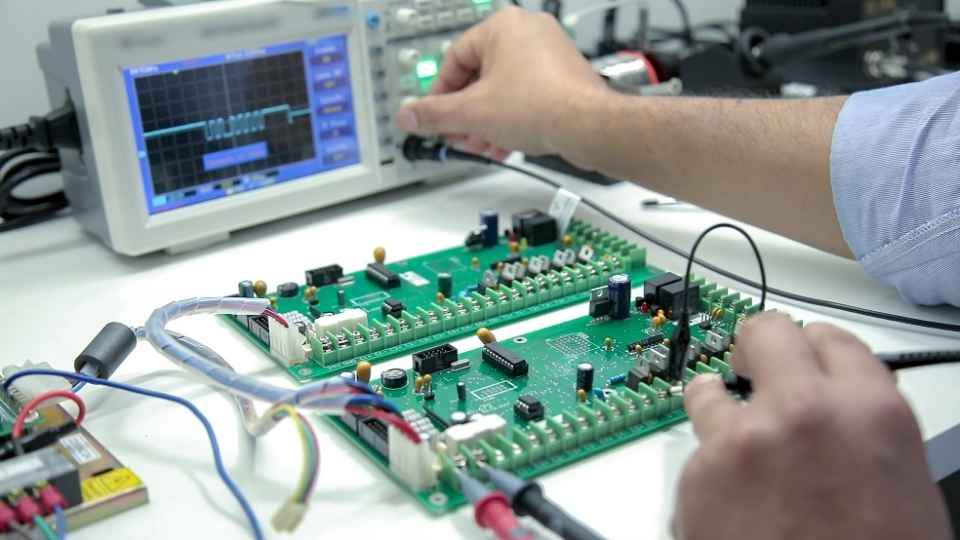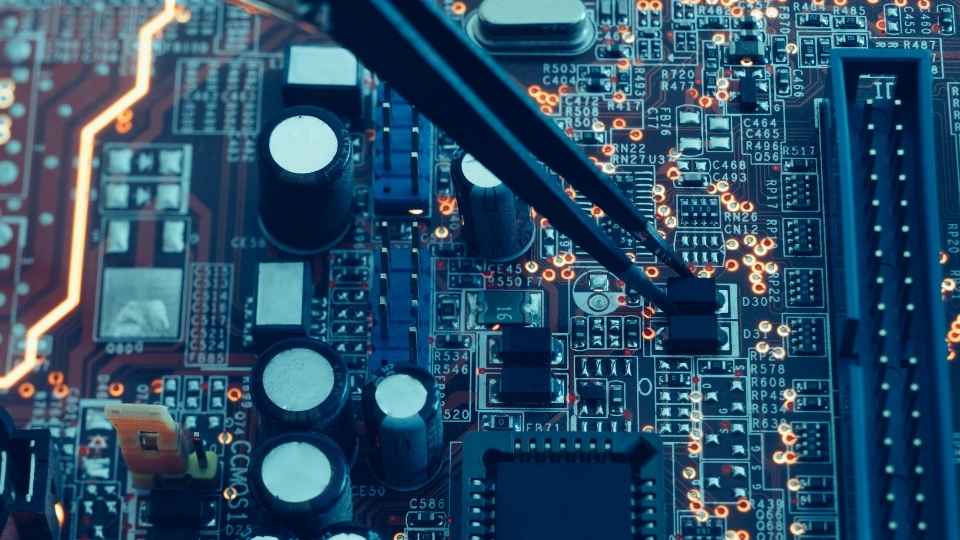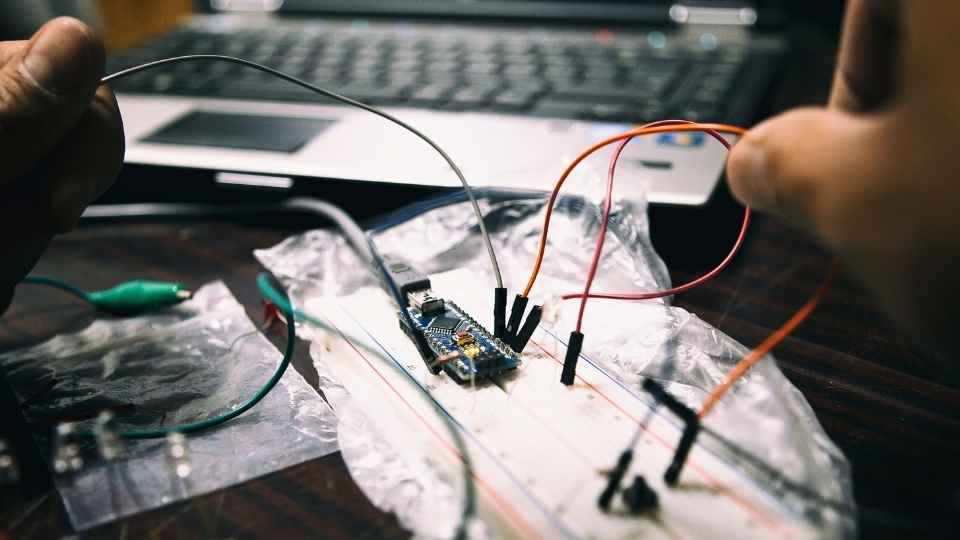
In a world driven by technological advancements, it is ironic how a tiny piece of hardware can wield such immense power.
ARM microcontrollers, the unsung heroes behind today's tech landscape, silently shape the devices and systems we rely on daily.
From smartphones to smart homes, these miniature yet mighty chips fuel innovation and drive progress.
In this article, we will delve into the intricacies of ARM microcontrollers, analyzing their impact, exploring their versatility, and uncovering the future trends that lie ahead.
Join us on this technical journey as we unravel the enigma of ARM microcontrollers and their role in shaping our freedom-driven world of technology.
Key Takeaways
- ARM microcontrollers have revolutionized industries such as IoT, robotics, and mobile devices.
- ARM architecture has shaped the development of modern technology in various industries.
- ARM microcontrollers have made a profound impact in the IoT industry, enabling connectivity and data processing capabilities.
- Cortex microcontrollers offer superior performance, energy efficiency, versatility, and scalability compared to competitors.
The Rise of ARM Microcontrollers in Modern Technology
The rise of ARM microcontrollers has significantly reshaped the modern technology landscape. These microcontrollers, known as Advanced RISC Machines, have revolutionized industries such as IoT, robotics, and mobile devices. They are highly regarded for their low power consumption, efficiency, and versatility in handling complex tasks.
In the realm of IoT, ARM microcontrollers have enabled the seamless integration of various devices and systems. They provide the necessary processing power and connectivity capabilities required to collect data from sensors, analyze it in real-time, and make intelligent decisions. This has led to advancements in smart homes, wearable technology, industrial automation, and more.

Furthermore, ARM microcontrollers have played a crucial role in the development of robotics. Their compact size makes them ideal for powering robotic systems with limited space. Whether it's controlling movement or processing sensor data for object recognition and navigation purposes, these microcontrollers offer the performance needed to achieve sophisticated robotic functionality.
In the mobile device industry, ARM microcontrollers have become the go-to choice for manufacturers due to their energy-efficient design. This allows users to enjoy longer battery life while experiencing high-performance applications on their smartphones or tablets.
Overall, the rise of ARM microcontrollers has empowered developers with greater freedom to explore new possibilities in various industries. As technology continues to advance at an unprecedented pace, we can expect even more groundbreaking innovations driven by these powerful yet versatile microcontrollers.
Understanding the Impact of ARM Architecture on Tech Innovation
The ARM architecture has had a profound impact on tech innovation, shaping the development of modern technology in various industries.
Its efficient design and low power consumption have made it a popular choice for mobile devices, IoT devices, and embedded systems.
The widespread adoption of ARM-based processors and microcontrollers has accelerated advancements in computing power, energy efficiency, and connectivity, driving the evolution of tech innovation.
Tech Innovation Influenced by ARM
Influenced by ARM, tech innovation has seen significant advancements in recent years. The flexibility and power of ARM microcontrollers have opened up new possibilities for various industries. Here are four key ways in which ARM has shaped today's tech landscape:

Mobile devices: With their low power consumption and high performance, ARM-based processors have revolutionized the mobile industry, enabling smartphones and tablets to become increasingly powerful while maintaining longer battery life.
Internet of Things: ARM's architecture is ideal for IoT applications due to its small size, low cost, and energy efficiency. This has driven the proliferation of connected devices in homes, cities, and industries.
Automotive technology: ARM chips are at the heart of advanced driver assistance systems (ADAS), infotainment systems, and autonomous driving technologies. They provide the processing power required for real-time data analysis and decision making.
Embedded systems: From medical devices to industrial automation, ARM microcontrollers have become the go-to choice for embedded applications thanks to their versatility, scalability, and extensive ecosystem support.
These advancements show how deeply ingrained ARM technology is in our daily lives and across industries. Now let's explore further the impact of ARM architecture on tech innovation.
Impact of ARM Architecture
Driven by the flexibility and power of ARM architecture, tech innovation has experienced a significant impact in various industries. The ARM architecture provides a versatile platform for developing microcontrollers that offer high performance while consuming minimal power. This has revolutionized the tech landscape by enabling the creation of smaller, smarter, and more efficient devices.
One area where ARM microcontrollers have made a profound impact is in the Internet of Things (IoT) industry. These low-power, cost-effective microcontrollers enable seamless connectivity and data processing capabilities, allowing for the development of innovative IoT solutions across sectors such as healthcare, manufacturing, and transportation.

Furthermore, ARM-based microcontrollers have also played a crucial role in advancing robotics technology. Their compact size and energy-efficient design make them ideal for powering intelligent robotic systems that can perform complex tasks with precision.
Exploring the Versatility of Cortex Series Microcontrollers
The Cortex series microcontrollers are renowned for their exceptional versatility and adaptability in various applications. With a diverse range of products, including the Cortex-M0 to the Cortex-A series, these microcontrollers offer unparalleled performance and efficiency.
Their ability to seamlessly integrate with different software and hardware components makes them an ideal choice for industries ranging from automotive and industrial automation to consumer electronics and IoT devices.
Cortex Vs Competitors
Compared to its competitors, the Cortex microcontroller stands out as a frontrunner in shaping today's tech landscape. Here's why:
Superior Performance: The Cortex microcontroller offers unmatched processing power, enabling it to handle complex tasks and applications with ease.
Energy Efficiency: With advanced power management features, the Cortex microcontroller optimizes energy consumption, extending battery life in portable devices.
Versatility: The Cortex microcontroller supports a wide range of peripherals and interfaces, allowing for seamless integration with various components and systems.

Scalability: Whether it's a simple embedded system or a large-scale IoT deployment, the Cortex microcontroller provides scalability options to meet diverse requirements.
The Cortex microcontroller's exceptional performance, energy efficiency, versatility, and scalability make it an ideal choice for numerous applications across industries such as automotive, healthcare, consumer electronics, and more.
In the following section, we will explore some of these applications in detail.
Applications of Cortex
One of the key advantages of Cortex microcontrollers lies in their ability to be applied across a wide range of industries and applications. These powerful microcontrollers have found their way into various sectors, such as automotive, industrial automation, consumer electronics, healthcare, and more.
In the automotive industry, Cortex microcontrollers enable advanced driver assistance systems (ADAS) and autonomous driving capabilities.
In industrial automation, they are utilized for precise control and monitoring of manufacturing processes.
Consumer electronics benefit from Cortex microcontrollers by providing high-performance computing in devices like smartphones and tablets.

Furthermore, these microcontrollers play a crucial role in healthcare applications by enabling medical devices such as patient monitors and implantable devices.
The versatility of Cortex microcontrollers allows for innovation and customization in countless fields, making them an indispensable tool for today's technology-driven world.
Transition: To fully harness the potential of Cortex microcontrollers, developers can unleash the power of Keil software in ARM development...
Unleashing the Power of Keil Software in ARM Development
Utilizing Keil Software in ARM development has become essential for unleashing the full potential of arm microcontrollers in today's tech landscape. Keil Software, a development environment specifically designed for ARM-based microcontrollers, offers a range of features and tools that enable developers to create efficient and optimized code. The power of Keil Software lies in its ability to streamline the development process, allowing developers to focus on their core tasks rather than getting bogged down by technical intricacies.
Here are four key reasons why Keil Software is indispensable for ARM development:
Integrated Development Environment (IDE): Keil provides a comprehensive IDE that includes a code editor, compiler, debugger, and simulator, all seamlessly integrated into one platform.
Extensive Device Support: Keil supports a wide range of ARM microcontroller families, ensuring compatibility with various hardware configurations.

Efficient Code Generation: With its powerful compiler and optimizer, Keil generates highly efficient code that maximizes performance while minimizing resource usage.
Real-time Debugging: Keil's debugger allows developers to efficiently debug their code in real-time, enabling quick identification and resolution of issues.
Examining the STM32 Microcontrollers: Driving Tech Evolution
Now, let's turn our attention to examining the STM32 microcontrollers and their role in driving tech evolution.
The STM32 microcontroller series, developed by STMicroelectronics, has gained significant recognition for its exceptional performance and flexibility. These microcontrollers are built on the ARM Cortex-M processor architecture, which enables them to deliver high-speed processing capabilities while maintaining low power consumption.
The STM32 microcontrollers offer a wide range of features and peripherals that make them suitable for various applications, from IoT devices to industrial automation systems. With their extensive connectivity options, including USB, Ethernet, and wireless protocols such as Bluetooth and Wi-Fi, these microcontrollers empower developers to create innovative solutions that connect seamlessly with other devices and services.
Furthermore, the STM32 ecosystem provides comprehensive development tools and software libraries that facilitate efficient programming and debugging processes. This allows developers the freedom to unleash their creativity while ensuring reliable operation and optimal performance of their applications.
Unlocking the Potential of LPC Microcontrollers in Today's Tech Landscape
To unlock the full potential of LPC microcontrollers in today's rapidly evolving technological landscape, it is crucial to understand their unique features and capabilities.

Here are four key aspects that make LPC microcontrollers stand out:
Performance: LPC microcontrollers offer high-speed processing capabilities, allowing for efficient execution of complex tasks and real-time applications.
Connectivity: With built-in interfaces like USB, Ethernet, and CAN, LPC microcontrollers enable seamless communication and integration with various devices and networks.
Flexibility: The LPC platform provides developers with a wide range of options, including different memory sizes, package types, and peripherals, allowing for customization based on specific application requirements.
Development Tools: NXP offers comprehensive software development tools such as IDEs (Integrated Development Environments) and libraries that simplify the coding process and accelerate time-to-market.
Future Trends and Innovations in ARM Microcontroller Technology
The future of microcontroller technology is marked by ongoing advancements and innovative trends that are shaping the landscape of tomorrow's tech industry. ARM microcontrollers, in particular, are at the forefront of these developments, offering enhanced performance, power efficiency, and versatility.
One key trend in ARM microcontroller technology is the increasing integration of artificial intelligence (AI) capabilities into these devices. This enables applications such as voice recognition, image processing, and machine learning to be implemented directly on the microcontroller itself.

Another significant trend is the integration of wireless connectivity options like Bluetooth Low Energy (BLE) and Wi-Fi into ARM microcontrollers, allowing for seamless communication with other devices and enabling IoT (Internet of Things) applications.
Furthermore, advancements in security measures ensure that data transmitted or stored on these microcontrollers remains protected from unauthorized access or tampering.
As technology continues to evolve rapidly, ARM microcontrollers will continue to play a crucial role in shaping the future of the tech industry by providing powerful yet efficient solutions for a wide range of applications across various sectors.
Frequently Asked Questions
What Is the History of ARM Microcontrollers?
The history of ARM microcontrollers dates back to the 1980s when Acorn Computers Ltd developed the first ARM processor. Since then, ARM has become a dominant player in the microcontroller industry, shaping today's tech landscape with its low power consumption and high performance capabilities.
How Do ARM Microcontrollers Compare to Other Microcontroller Architectures?
ARM microcontrollers offer a unique architecture that sets them apart from other microcontroller designs. Their efficient and power-saving capabilities, combined with their wide range of application possibilities, make them a preferred choice in today's rapidly evolving tech landscape.
What Are the Main Advantages of Using ARM Microcontrollers in Tech Innovation?
The main advantages of using ARM microcontrollers in tech innovation include their low power consumption, high performance, scalability, and extensive ecosystem. These features make them ideal for a wide range of applications and contribute to shaping the current tech landscape.
Can ARM Microcontrollers Be Used in a Wide Range of Applications, Beyond Traditional Tech Devices?
Yes, ARM microcontrollers can be utilized in a wide range of applications beyond traditional tech devices. Their versatility and scalability allow for their integration into various industries, from automotive to healthcare, enabling innovation and enhancing efficiency.

Some popular development tools and software used in ARM microcontroller development include Keil MDK, IAR Embedded Workbench, and STM32CubeIDE. These tools provide an integrated environment for coding, debugging, and testing applications on ARM-based microcontrollers.
 Basic Electronics ConceptsEssential ToolsCircuit Design BasicsMicrocontrollersDIY Electronics ProjectsRoboticsPrivacy PolicyTerms And Conditions
Basic Electronics ConceptsEssential ToolsCircuit Design BasicsMicrocontrollersDIY Electronics ProjectsRoboticsPrivacy PolicyTerms And Conditions
